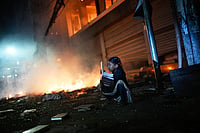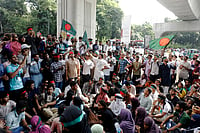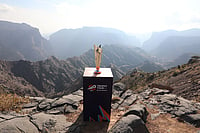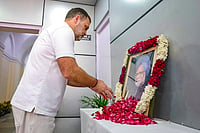Scattered along the Line of Control (LoC) in Pakistan-held Kashmir, there are several high-security zones commonly known as launching pads or duds. These are managed by the Pakistan-based jehadi groups. It is from here that militants who have been trained await the green signal to cross over to India.
Going across the border is not as simple as popular perception would have it. Militants who have gone on missions to the Valley talk about the careful preparations that goes in before a militant is sent across. There is a high level of secrecy involved in the entire operation. Even the militants come to know the exact time of their departure only at the last minute. The jehadi groups also keep a tight lid on the movement and deployment of their cadres in the Valley. "We maintain secrecy at every stage. The journey from the launching pads to the Pakistani army post is carried out amid extreme secrecy," says a militant who had been to India twice in the last one year.
According to militants contacted by Outlook, it is often in the middle of the night that an unmarked vehicle turns up at one of the launching pads, picks up two or three militants as per the plan and drops them at any one of the designated Pakistani army forward post along the LoC depending on the intrusion route.
It is at these posts that men in civilian clothes, believed to be isi officials, hand over an operations kit to each militant. The kit includes weapons, ammunition, explosives and Indian currency. Long before their arrival at the posts, their leaders would have already finalised the weaponry details with the isi, depending on the nature of the assignment. The militants would be given two days to check their weapons and other accessories, and get ready for the final intrusion.
No militant is allowed to take his own weapon and cross the LoC. Even if anyone wants to take his own gun, he has to surrender it in Muzaffarabad at the party offices or camps.
Normally, a group would consist of a guide and five to 10 militants. Each one carries 10 to 15 kg of weapons and stores. It is in the late hours of the night that the group would leave for India. Crossing the LoC is seen as the most difficult part of the operation. Only the ones who survive the Indian guns and snipers will ultimately be able to fight in the Valley.
It takes anywhere between three and 10 nights for the group to actually reach the Valley. The time taken is also dependent on the terrain and the alertness of those manning the Indian observation posts. Should the Indians spot the intruders and open fire, then the Pakistani guns would come to the help of the militants.
Once they cross over, the militants are escorted by guides to hideouts in the forests. Only the lucky few who survive make the hazardous journey back home. They have to cross over to Pakistan on their own. Once they reach an army checkpost, they are helped on their onward journey.

























